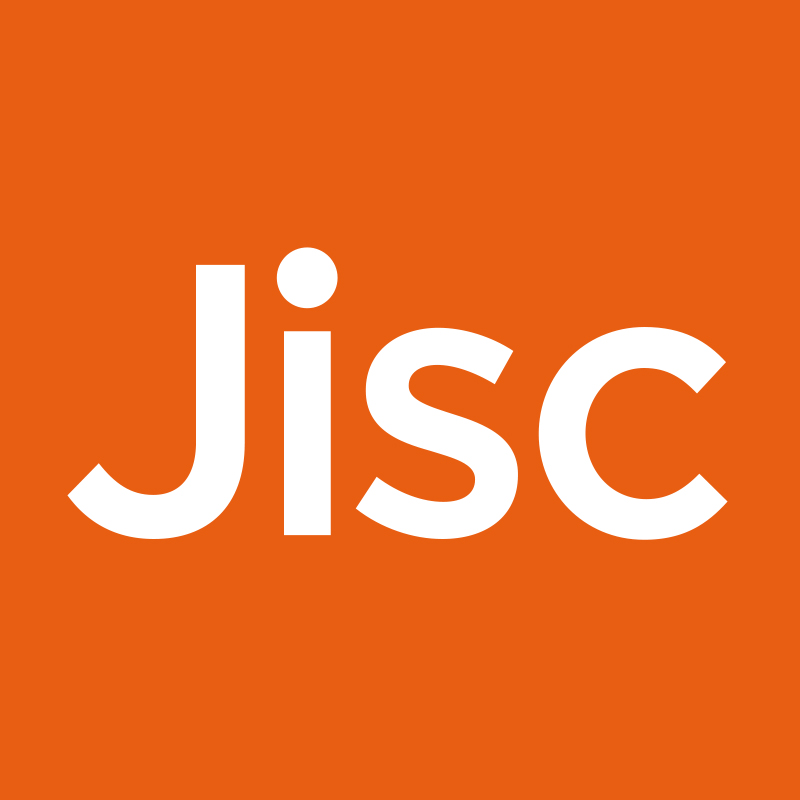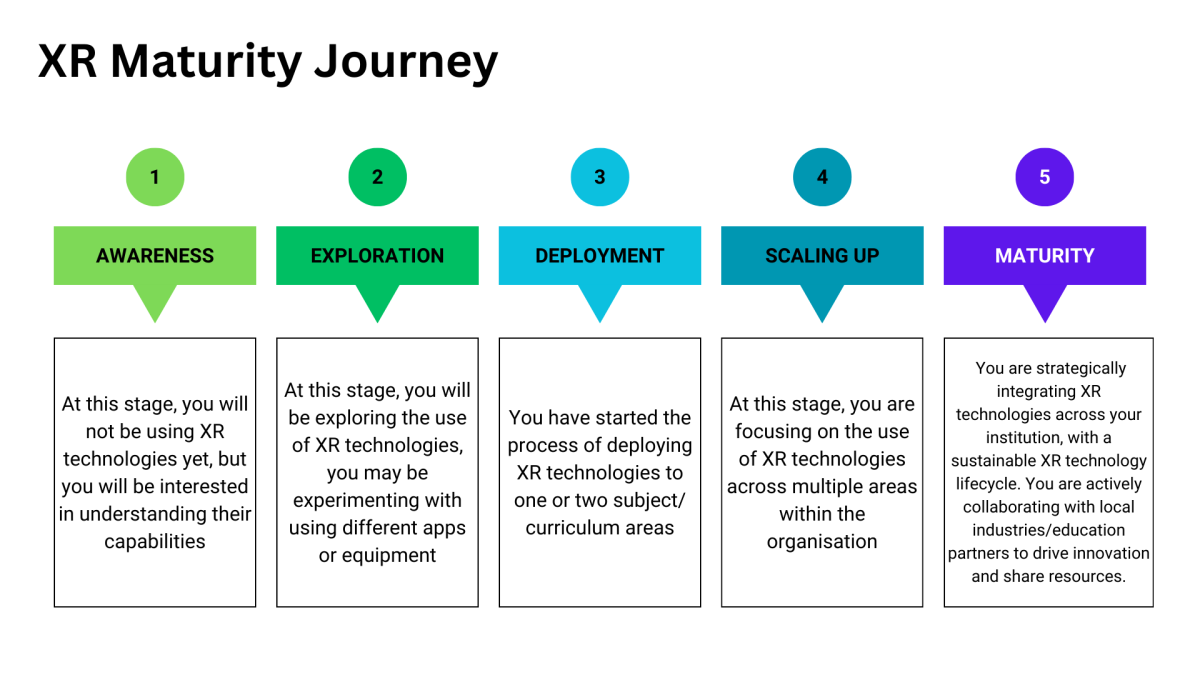Full XR maturity model diagram available to view on Canva. CC-BY-NC-SA.
We kicked off the session by exploring the XR maturity model (see image above) and encouraging participants to identify where their institutions currently stand. The responses were diverse, with most attendees placing their institutions at stage three or above, demonstrating their confidence in using immersive technologies. This exercise sparked a rich exchange of stories and experiences, highlighting the varied paths institutions have taken on their XR journeys. While the model isn’t necessarily a ladder, it provided a valuable framework for sharing both successes and challenges.
Sharing resources and piloting
Is collaboration the key to success? It certainly seemed so during the conversations at the community meet up. When it came to sharing XR resources and licences, great examples were shared of institutions pooling licences to reduce costs and increase availability for users.
Thoughts were also shared on the trialling/piloting of XR hardware and software and the need for more support in the early stages. Being able to share access and test resources before making them available on a larger scale is important and if this was made easier it would improve the process. Jisc facilitated trials, for example, the Bodyswaps pilot, were useful in helping organisations make decisions about the software before purchasing it. Sharing experiences at events within the XR community is incredibly valuable, especially for those in the early stages of adoption. Some of these examples/ stories have been collected in our Padlet (which you can continue to contribute to), as well as our XR in learning and teaching report. In the XR community Microsoft Teams area, members have also compiled lists of medical XR simulations they have investigated.
Additionally, scaling XR use from focused applications in specific areas to broader, cross-disciplinary adoption remains a challenge that requires further support. Repeatability is also an important factor to consider – will learners be able to continuously use the software, increasing its value for money, or is it a one-off experience?

Dedicated Space
The need for dedicated XR spaces was another hot topic. Space is not easy to come by. There were stories of space being reallocated for other uses or, more commonly, not being available at all. However, there were success stories too. One participant reported they had finally acquired a space after a three-year wait, which they are now co-designing with students. Having a dedicated XR space on campus means that you have a convenient and secure area to store and charge the equipment, that staff members can book out with learners.
However, the question was raised about whether a dedicated XR space is needed. Some institutions are considering a ‘self-service’ method, allowing learners to take home VR headsets. Other institutions are using station rotation methods in the classroom to use in their everyday teaching.
Use of AI
No discussion about the future of education would be complete without mentioning AI. Thinglink AI was mentioned as a user-friendly, time-saving tool for creating escape rooms. AI can be used to create the 360 backgrounds reducing the need for time and the specialist equipment to create bespoke scenery.
Institutions are also exploring the use of AI to create non-playable characters within a simulation, that learners can interact with and receive feedback from.
Involving learners when using XR
During the keynote on day one of Digifest, we heard from Paul Iske who warned about the implications of not involving your end user in the design process. He told the story of the ‘squirrel bridge’ in the Netherlands costing £120,000, but only being used a handful of times. A common analogy is likely heard when using XR – spending thousands on the equipment, for it to be ‘sat in the cupboard’ because learners weren’t consulted in the buying process. Members emphasised the importance of involving learners in the design of the XR space, the development or procurement of content, and the running of the XR session.
Final Thoughts
The XR community meet-up at Digifest was a prime example of the vibrant and collaborative spirit within the sector. The event encouraged rich discussions on the XR maturity model, collaborative resource sharing and the importance of co-creation with students.
We’re looking forward to continuing these discussions at our next ALT/ Jisc XR community meet up at Birkbeck, University of London on 27th June. Our XR community, which is free to join, welcomes new members from FE and HE organisations with an interest in XR, including educators, digital managers, learning technologists and IT staff, library/LRC staff and research.

